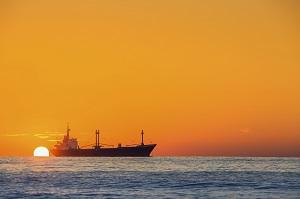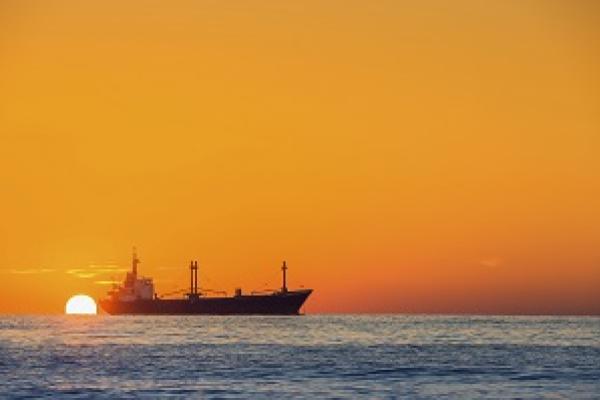
Danielle Southey
Published: May 01, 2016

Whilst underperformance disputes are common place, in most cases, the current low rates of hire means that disputed sums are modest and litigation is unappealing. It is, therefore, interesting when disputes dealing with underperformance are reported.
The recent case of Polaris Shipping Co. Ltd v Sinoriches Enterprises Co. Ltd (Ocean Virgo) [2015] EWHC 3405 (Comm.) discussed the admissibility of good weather periods where the charterparty had no express limit on the length of the period that could be admissible.
Facts
The bulk carrier, "Ocean Virgo", was fixed for a time charter trip in December 2013 on a NYPE form. The charterparty contained performance warranties on the basis of “good weather/smooth sea, up to max BF SC4/Douglas sea state 3, no adverse currents, no negative influence of swell”.
Under that charterparty, the vessel performed a ballast voyage from China to Canada and then a laden voyage carrying coal to South Korea, where she was re-delivered.
Charterers claimed US$263,832 for breach of the performance warranties relying on information gathered in weather routing reports. The definition of good weather was not disputed but Owners defended the claim on the basis that the ‘good weather’ periods were too short to establish a breach of the warranties.
Award
The sole arbitrator dismissed Charterers’ claim finding there were no admissible periods of good weather on which the vessel’s performance could be assessed.
The arbitrator noted that in order for a period of the voyage to be admissible, that period must be at least 24 consecutive hours from noon to noon. Based on this interpretation, the arbitrator found that there had not been any periods of good weather. In particular, the arbitrator discounted two periods of 14 and 16 hours, respectively, on the basis that they were each under 24 hours in length. More generally, the arbitrator commented that any weather sample considered for the purpose of establishing a breach of warranty had to be sufficiently large so as to be representative of the voyage.
Appeal
The Commercial Court allowed Charterer’s appeal under s. 69 of the Arbitration Act on the basis that the arbitrator had erred in law when he had limited admissible good weather periods to 24 consecutive hours running from noon to noon. The court held there was no reason for the arbitrator to do this; the charterparty did not limit the admissibility of good weather periods in this way since there were "no words in the charterparty which justify construing good weather as meaning good weather days of 24 hours from noon to noon"1. The court remitted the award to the arbitrator to reconsider whether the 14 and 16 hour periods of good weather were sufficient samples on which to judge the vessel’s performance.
Comment
It is worth noting that in his judgment, Mr Justice Teare did not consider it an error in law in determining that a period of good weather was inadmissible because it was too short to be a suitable sample, in fact this was a permissible approach for the arbitrator to take in assessing evidence. The error of law was in excluding periods purely on the basis that they were not 24 consecutive hours running from noon to noon because there was nothing in the charterparty to support such a restriction. As such if the clause had been worded in another way, the case could have been decided differently.
Helpfully, Mr Justice Teare restated the ‘traditional manner’ in which a charterer should assess whether there has been a breach of a performance warranty, citing The Didymi2 and The Gas Enterprise3 , in first assessing performance in good weather, as prescribed by the charterparty, and then applying any shortfall in performance that is established to the whole voyage (aside from any periods of slow steaming at charterers’ request).
If, therefore, the 14 and 16 hour periods in question in the case of the Ocean Virgo are considered as sufficient samples on which to assess the voyage, the arbitrator will then need to determine whether those periods establish a breach of the performance warranties. If so, that level of underperformance will be applied to the whole of the charterparty, aside from any periods of slow steaming on Charterers’ instructions.
Of course it remains possible for contracting parties to agree that a vessel’s performance should be assessed by reference to good weather, only if it exceeds 24 consecutive hours running from noon to noon. Some may prefer the certainty that a fixed minimum length is seen to give, rather than the subjective assessment of what a suitable sample period might be. Whether there is any rationale in continuing the traditional ‘noon to noon’ methodology is perhaps less clear, particularly when more detailed weather breakdowns are so readily available.
There is also an added complication in that a ‘noon to noon’ approach will often result in either a 23 or 25 hour sample period when a ship sailing either east or west through different time zones adjusts its clocks by an hour: a factor that was not addressed by either the arbitrator or the court.
In any event, any prescribed limit on the minimum length of periods that can be considered as admissible will now need to be expressly incorporated into the charterparty.
The case is also a good illustration of the Arbitration Act’s appeal procedures available under s.68 and s.69. Mr Justice Teare reiterated in his judgement that the court should read an arbitrator’s award in a "reasonable and commercial way expecting, as is usually the case, that there will be no substantial fault that can be found with it" and not with "the objective of upsetting or frustrating the process of arbitration"4.
1 Polaris Shipping Co.Ltd v Sinoriches Enterprises Co. Ltd (Ocean Virgo) [2015] EWHC 3405 (Comm.) Paragraph 18
2 The Didymi [1998] 2 Lloyd's Reports 108
3 The Gas Enterprise [1993] 2 Lloyd's Reports 352
4 Quoting Zermalt Holdings SA v Nu-Life Upholstery Repairs Ltd [1985] 2 EGLR 14 per Bingham J.


